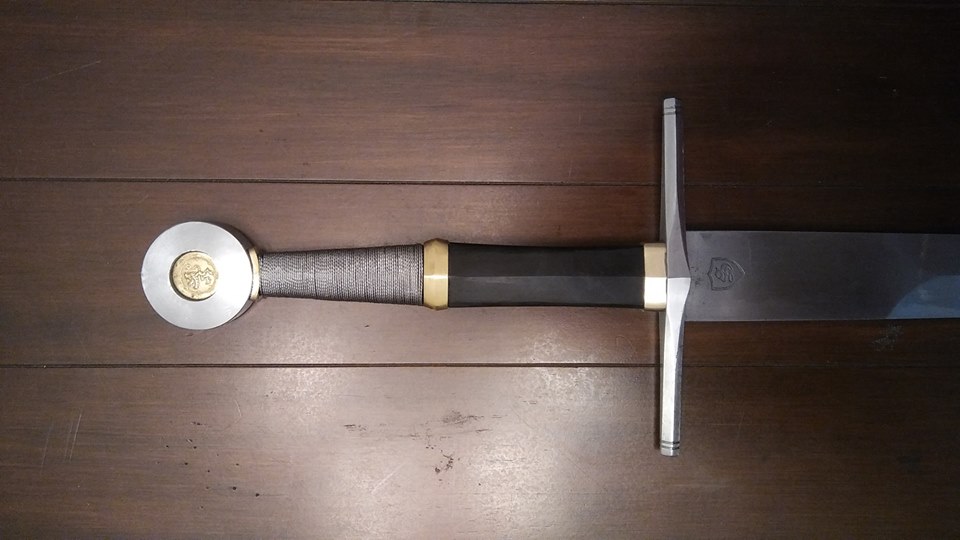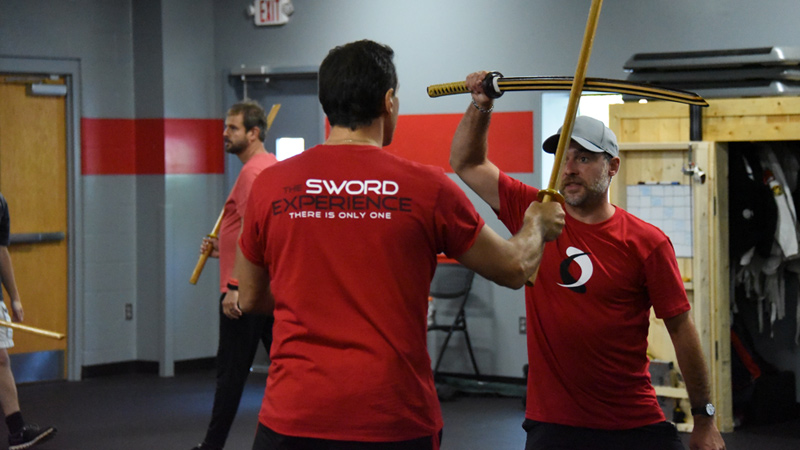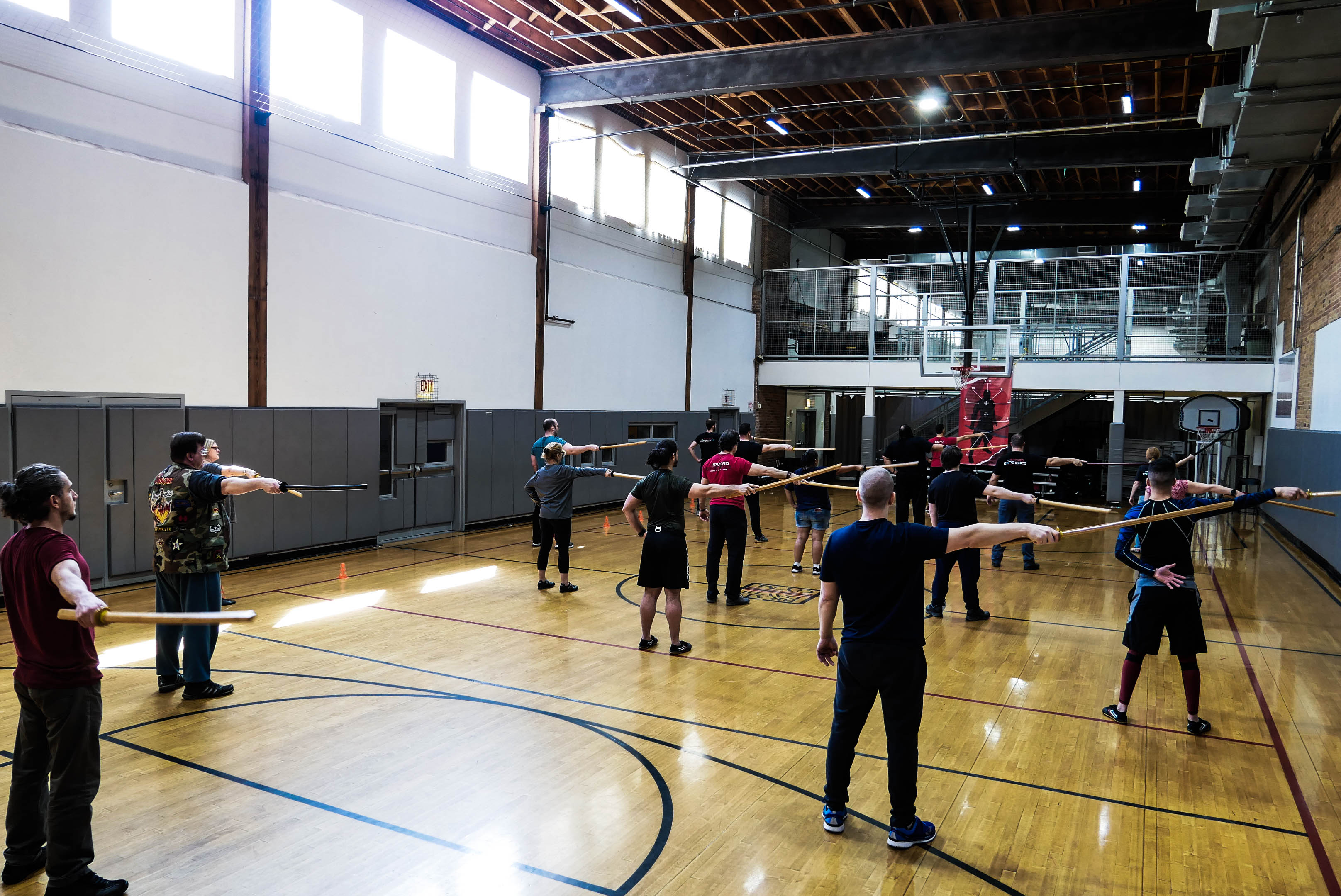
The Perfect Sword Part 4
The Perfect Sword Part 4
By Chris Fields
As the Roman Empire took over and iron and early steel were developed, the Roman’s iconic sword the Gladius came into prominence, as it served as an effective tool alongside the soldier’s large tower shields. The tactics of the Roman army lead to the general shape of the gladius, most likely derived from earlier bronze hop lite swords, designed primarily for trusting and quick cuts in close quarters, side by side in tight formation lines, with massive tower shields protecting the wielders. It was an effective combination that swept most of Europe, the middle east, and northern Africa. The longer version, the Spatha, was design to be used mostly from horseback, where longer reach and larger swings could be utilized.
As better materials were discovered, developed, and able to be better utilized, sword blades tend to get longer and more flexible, sword designs from all over the world started to develop at different rates.Driven mostly by armor design and cultural traditions of the time and place.
In Europe after the Roman empires steel developed early on, and mail, also known as chain mail, as well as cloth armor became more common, long single hand steel swords with wide I-beam like blades were designed to be light and flexible as to slice into the gaps in the mail armor.
These were still designed to be used with a shield, and not by themselves. Because they were very flexible and designed mostly for cutting, these blades usually had very rounded tips as they were not as effective at trusting. This is what we think of as a typical Viking sword, but we see this design all throughout Europe from the pre-Viking era all the way up in the early medieval era.
Once good steel became common in the late 13th and 14th century and better armor was being produced, sword design had to change to adapt to new armor designs. Plate armor became popular and sword design now shifted again from large, thin, slicing blades, back to more ridged blades with acute points with thick diamond cross sections.
These blades could not only trust into the gaps of the plates when fighting against armored knights, but also cut when fighting less armored ranks. From here we get designs of the famous knightly swords, long swords, and great swords of Europe.
The guards on these swords become more important for hand and arm protection as shields became smaller and less common. And style of combat, as well as cultural traditions and influences, brought about the design of the European cross guard. At the same time sword handle lengths often grew as shield size reduced or shields were no longer needed due to the armor and two hands could be focused on the swords.
Chris Fields has trained in martial arts and various forms of swordsmanship for 29 years, and instructing for 23 years, including choreography for various stage, theater, and film. Chris is critically acclaimed for his choreography work in the St. Petersburg Shakespeare Company production of Hamlet and Richard III, as well as various works in independent film and film festivals throughout the southeast.
Chris is also a sword maker and smith of 25 years, and owner of Sterling Armory, providing quality functional swords for various industries. When not working on swords and martial arts, Chris is a Senior Aerospace Engineer working for Honeywell Aerospace, a NASA subcontractor and affiliate.
How to Bring the Sword Experience to You?
Many of our Musketeers have asked us how to bring the Sword Experience to your town, and today we’d like to share with you how to make your Sword Experience dream a reality. If there is not a Con Experience happening in your area, then the only way for a Sword Experience to come to your town is through your diligent work as a Musketeer to put on a fantastic Elite Experience.
Those who have read our previous blog regarding the Elite Experience already know that when we put on an Elite Experience, location is key. Our goal during an Elite Experience is to create a sense of immersion and scale with a unique backdrop to the event itself. Since we may not know what hidden gems of locations your town holds, it is up to you, our trusted Musketeers, to bring these locations to our attention.
A prime example of this is our Elite Experience we recently had in Bowling Green. Stephen Fisher, one of our most valued Musketeer’s and Sword Partners, found the perfect locations for both the training portion and the climactic final fight scene for our Bowling Green event. He allowed us to hold the sword training and physical fitness portion of the event at his Fencing Academy. He also made us aware of the wonderful Historic Railway Park located right next door. This Railway Park was the perfect spot to film the final fight scene for the event as it was not only relevant to the chorography learned that day, but it was a breathtaking and unique location that we felt took the Sword Experience to the next level.
The next thing to consider is that the Sword Experience is also a class in physical fitness, sword training, and sword choreography. All classes need students. When we bring the Sword Experience to your town, we need to know that people in the area are interested in learning the art of sword handling and fight choreography.
During all Sword Experience events, you will be paired with a partner as you learn the art of sword handling and sword fighting together. It is imperative to the learning process that there are as many participants as possible to ensure that people can be paired off with those with similar skill sets. If it seems like there is not interest in our event, then the likelihood of us coming to your town is slim. The easiest way to show us this interest is by tagging us on social media, and getting others in your area to show interest in our events. You and your friends can also email us at contact@swordxp.com with your interest in the Sword Experience.
Lastly, you can help us find photographers and videographers in your area. We pride ourselves on capturing the moments shared at our events and want nothing but the best. If you know someone in the area that is a professional photographer and or videographer, send them our way.
These individuals are essential in making the Sword Experience a success. Everyone wants to take home a keepsake of their adventure with us, so we’re looking for the best photographers and videographers we can find. These photographers and videographers are essential in telling a story through images. Your help in that subject is always greatly appreciated.
Of course, your hard work will be rewarded if each of these components are met. Not only will the Sword Experience make it to your hometown, but as our Chicago participants have learned, when we discover a location that we like, we love coming back! So, keep up the excellent work and you may even get a shout out from us at The Sword Experience.
What is the Sword Academy?
We’ve already discussed what the Con Experience, the Elite Experience, and the Sword Experience Retreat are, but what exactly is the Sword Academy. The Sword Academy is a program for those who wish to focus completely on the physical fitness and sword choreography portion of the Sword Experience. It is a stripped-down version of our Con and Elite Experience’s.
While our Con and Elite Experience’s are a fun one-time training day, the Academy is a continuing class that teaches you the fundamentals of sword training, fight choreography, and sword handling. As you continue with the program, your agility and strength will increase. Your targeting and sword mastery will increase. The goal of the Sword Academy is to increase your quality of life through the art of sword choreography as a form of physical fitness.
Each one of our Academy sessions has three seminars each with a different focus. The first seminar focuses on basic physical fitness to improve stamina, balance, mobility, and strength using swords to create an unconventional 90-minute workout. The second seminar focuses on technique.
This 90-minute session stresses the importance of sword handling by strengthening one’s ability to correct targeting, angulation, speed, and agility with a sword. The final seminar focuses on performance. If you’re interested in how fight and sword choreography translate to film, this is the seminar for you. This two-hour class focuses on understanding how camera angles and direction influence a fight scene.
When you sign up for the Sword Academy, you will automatically become a Sword Academy member and gain exclusive access to our Sword Academy training videos to continue your physical fitness and sword training at home. Every time you sign up you will receive a new set of training videos to add to your collection and continue you down the path of becoming a sword expert.

